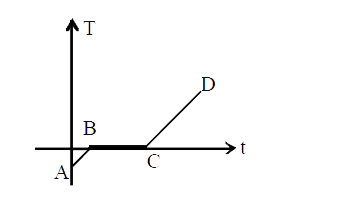The temperature of an object is observed to rise in a period. In this period
(i) Heat is certainly supplied to it
(ii) Heat is certainly not supplied to it
(iii) heat may have been supplied to it
(iv) work may have been done on it.
heat is certainly supplied to it
heat is certainly not supplied to it
heat may have been supplied to it
work may have been done on it
The correct Answer is:C, D
heat may have been supplied to it,work may have been done on it
Topper's Solved these Questions
Similar Questions
How much heat must be supplied to nitrogen in a process of heating at constant pressure that the gas may perform 2 joules of work?
View SolutionA thermos flask contains coffee. It is shaken vigorously. (i) Has any heat been added to it.
(ii) Has any work been done on it.
(iii) Does it internal energy change?
(iv) Does its temp. rise?
View Solution
Knowledge Check
The temperature of a solid object is observed to be constant during a priod. In the period
(i) Heat may have been supplied to the body
(ii) heat may have been extracted from the body
(iii) no heat is supplied to the body
(iv) no heat is extracted from the bodyA(i),(iii)B(ii),(iii)C(iii),(iv)D(i),(iv)If heat a supplied to a solid, its temperature
Amust increaseBmay increaseCmay remain constantDmay decreaseIf heat is supplied to s solid its temperature
(i) must increase
(ii) may increase
(iii) may remain same
(iv) may decreaseA(i),(iii)B(ii),(iii)C(iii),(iv)D(i),(iv)
Heat is supplied to a ice at a constant rate Temperature variation with time is as shown in figure. Then –

View SolutionFour moles of a diatomic gas is heated from 0∘C to 50∘C. Find the heat supplied to the gas if work done by it is zero.
View SolutionHeat energy can be supplied to a substance without increasing its temperature.
View SolutionA sample of ideal gas (γ=1.4) is heated at constant pressure. If 100 J of heat is supplied to the gas the work done by the gas is
View SolutionThe temperature of ozone in a vessel, is raised by 1∘C at constant volume. Part of total heat supplied to the gas may be taken as translational and rotational energies. Their respective shares are
View Solution
